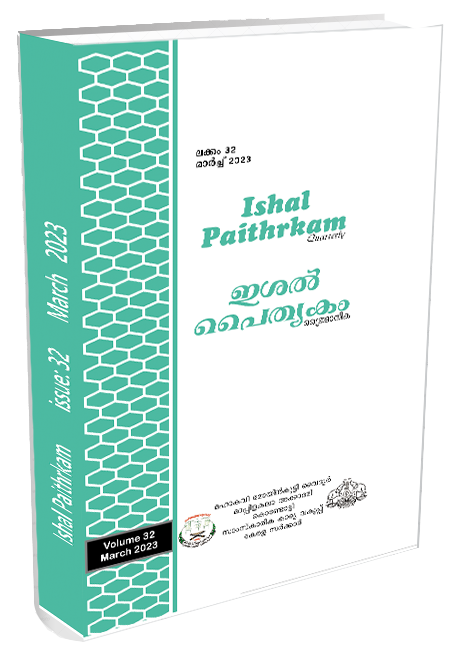Drawing the Sri Lankan Ethnic Conflict: An Analysis of Benjamin Dix and Lindsay Pollock’s Ethnographic Novel Vanni
Keywords:
Graphic novel, counter-narratives, narratives, Sri Lankan ethnic conflict, Vanni (2019), Benjamin Dix, Lindsay PollockAbstract
This paper seeks to expand the concept of counter-narratives to research component in and surrounding Sri Lanka civil war narratives. Historically, every act of militant reprisal demands the exigency of military warfare to annihilate them thereby, restoring peace in the land. Whereas, amidst the status quo of terrorism-counterterrorism and human rights compliance, the significance of human lives caught in the crossfire remains a disputed notion. As Stanley points out, “dominant culture have justified systems and rules … in such a way that makes these models ‘the standard’” (Stanley 15). In this sense, the war on terror/fighting terrorism is the international standard master-narrative in which plight of the civilians caught in the crossfire are legalised in the name of combating terrorism. Yet, the testimonies of innocent civilians who witnessed and experienced the horrors of modern warfare act as a counter-narrative discourse exemplifying the injustice perpetrated on them, thereby demanding justice. The focus of the paper is what we may call ‘graphic dissent’ a mode of counter discursive strategy to bring in an alternative history or narrative. The study examines Benjamin Dix’s ethnographic novel, Vanni a family’s struggle through Srilankan conflict (2019) as a counter-narrative discourse that undermines the dominant military dogma of Sri Lanka in fighting terrorism through the lens of a civilian.
Downloads
References
Amarasingam, A. ,& Rukshana,R.(2020). “Turning the Tap Off: The Impacts of Social Media Shutdown after Sri Lanka’s Easter Attacks.” The International Centre for Counter-Terrorism, Oct. 2020.http//doi: 10.19165/2020.1.07.
Bamberg, M., and Molly Andrews. (2004). Considering counter narratives: Narrating, resisting, making sense. Amsterdam: John Benjamins
Besieged, Displaced, and Detained. (2008). Human Rights Watch. www.hrw.org/report/2008/12/23/besieged-displaced-and-detained/plight-civilians-sri-lankas-vanni-region#_ftn1. Accessed 8 Aug. 2021.
BOOK REVIEW: Vanni: A Family’s Struggle through the Sri Lankan Conflict. (2019). Asia Sentinel. www.asiasentinel.com/p/vanni-family-struggle-indian-ocean-tsunami-2004.
Dix, B., & Kaur, R. (2019). Drawing-Writing Culture: The Truth-Fiction Spectrum of an Ethno-Graphic Novel on the Sri Lankan Civil War and Migration. Visual Anthropology Review, 35(1), 76–111. https://doi.org/10.1111/var.12172
Dix, B., & Pollock, L. (2019). Vanni: A Family’s Struggle Through Sri Lankan Conflict. New Internationalist.
Dutta, A. (2019). A Graphic Novel That Documents the Horrors of Vanni in Sri Lanka. The Indian Express. http://indianexpress.com/article/express-sunday-eye/written-in-the-scars-sri-lankan-civil-war-ltte-graphic-novel-vanni-a-familys-struggle-through-the-sri-lankan-conflict-benjamin-dix-lindsay-pollock-6119072/.
Forster, E.M. (1927). Aspects of the Novel. Harcourt, Brace and Company.
Frandsen, S., Timothy,K.& Marianne,W.(2013). Counter-Narratives and Organization. Routledge.
Harrison, F. (2013). Still Counting the Dead: Survivors of Sri Lanka’s Hidden War. Portobello Books.
Huntington, S. (2014). The Clash of Civilizations and the Remaking of World Order. London, Penguin.
James, H. (1884). The Art of Fiction. Longman’s Magazine.
Janardhanan, A. (2018) .Modi Govt Officials Look at Sri Lanka Differently… without
Understanding: Gotabaya Rajapaksa. The Indian Express.http://
indianexpress.com/article/world/narendra-modi-govt-officials-sri- lanka-gotabaya-rajapaksa-sri-lanka-ltte-5110300/.
JLF London 2020 | Vanni: A Family’s Struggle through the Sri Lankan Conflict. (2020). JLF Lit Fest. www.youtube.com/watch?v=hZQNqZA8Ou8. Accessed 22 Aug. 2021.
Ministry of Defence, Democratic Socialist Republic of Sri Lanka. (2006). Humanitarian Operation Factual Analysis July 2006 – May 2009.
Nelson, H.L.(2001). Damaged Identities, Narrative Repair. Cornell UP.
Lueg, K., and Marianne W.(2021). Routledge Handbook of Counter-Narratives., Routledge.
News, Channel 4. (2011). Sri Lanka’s Killing Fields. [Video].YouTube, www.youtube.com/watch?v=e_p1TfTguW0.
Petrie, C. (2012). Report of the Secretary-General’s Internal Review Panel on United Nations
Action in Sri Lanka. United Nations Digital Library System, digitallibrary.un.org/record/737299.
Ryan, B. (2004). NWSA Journal, vol. 16, no. 2, pp. 234–237. JSTOR, www.jstor.org/stable/4317071.
Somasundaram, D. (2010). Collective trauma in the Vanni- a qualitative inquiry into the mental health of the Internally Displaced due to the civil war in Sri Lanka. International Journal of Mental Health Systems, 4(1), 22. https://doi.org/10.1186/1752-4458-4-22
Sri Lanka Rejects Rebel Ceasefire. (2009). News.bbc.co.uk.http://news.bbc.co.uk/1/hi/world/south_asia/8019865.stm. Accessed 5 Aug. 2021.
Stanley, C. A. (2007). When Counter Narratives Meet Master Narratives in the Journal Editorial-Review Process. Educational Researcher, 36(1), 14–24. https://doi.org/10.3102/0013189x06298008
Swarup, M. (2013). Sri Lanka Starts Count of Civil War Dead. Al Jazeera English, Al Jazeera America, http://america.aljazeera.com/articles/2013/11/28/sri-lanka.
Tennekoon, D. (2019). The Graphic Fiction Vanni is a Poignant Chronicle of Survival from Sri Lanka’s Civil War.” The Caravan. http://caravanmagazine.in/culture/vanni-graphic-novel-sri-lanka-benjamin-dix-lindsay-pollock-deshan-tennekoon.
Vanni: A Sri Lankan Story. (2020). Jaipur Literary Festival [Video]. YouTube,
www.youtube.com/watch?v=AiXPJ6JATDU. Accessed 5 Aug. 2021.
Weiss, G. (2012). The Cage: The Fight for Sri Lanka and the Last Days of the Tamil Tigers. Bellevue Literary Press.
Wickramasinghe, N. (2015). Sri Lanka in the Modern Age: A History. Oxford UP.
Downloads
Published
Issue
Section
License
Copyright (c) 2025 ISHAL PAITHRKAM

This work is licensed under a Creative Commons Attribution 4.0 International License.

